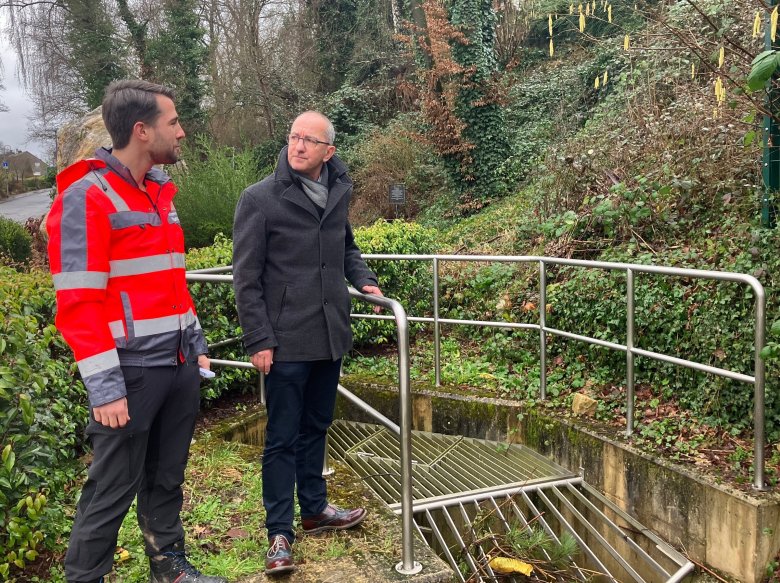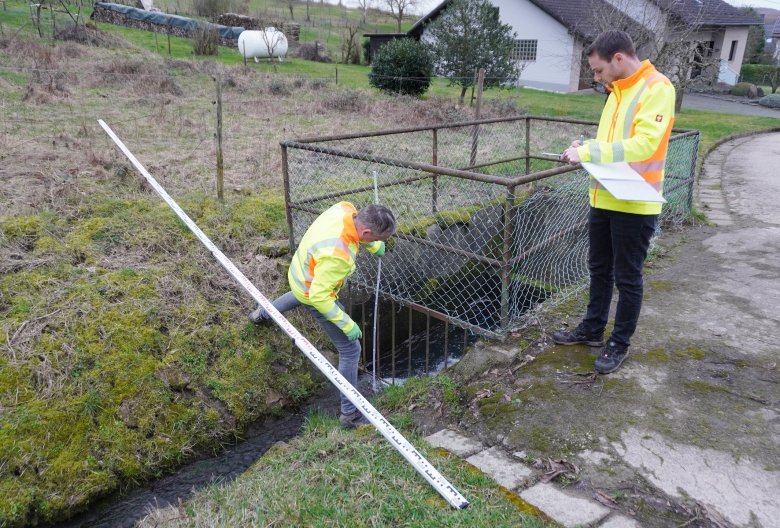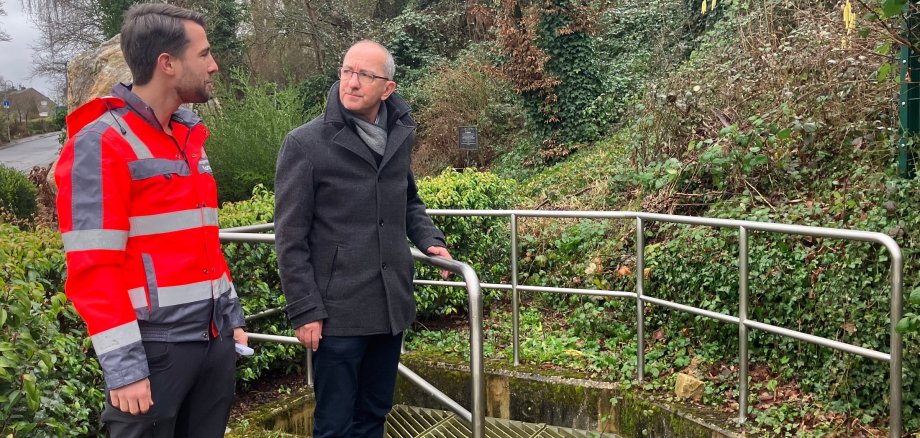Heavy rain prevention in VG Konz is being optimized
Konz, February 26, 2024
Measurements are currently being carried out on so-called inlet structures in the Konz municipality. These technical systems are usually made of concrete and are located, for example, on bodies of water in front of stream pipes and on drainage ditches in vineyards. They play an important role in heavy rain events as the rainwater flows through the structures into the canals, thereby reducing the risk of flooding.
As part of the implementation of the flood and heavy rain prevention concept for VG Konz, 27 inlet structures are now being optimized. These systems mostly date from the 1970s and work during normal rainfall. In the future, however, we must expect more frequent heavy rain events and flash floods due to climate change. The old systems were not designed for this because this was not common practice 50 years ago. “That’s why the inlet structures should now be brought up to date with the latest technology,” says Mayor Joachim Weber. “This makes the Konz community one of the pioneers in Rhineland-Palatinate.”

Photo: Mayor Weber with Florian Acht from the heavy rain protection project management at an inlet structure that was renovated in 2018.
The most important difference between old and new buildings is that larger amounts of rainwater can drain away better. The new systems are not just grids with a street inlet, but are adapted to the respective local situation. Where there is enough space and it makes sense, there should be three-dimensional buildings, for example. This means that even if part of the grid is blocked by flotsam or debris, water can still drain into the canal from the side or top. In addition, three-dimensional structures are easier and more cost-effective to maintain.

Photo: The Hömme planning office is carrying out documentation on an old inlet structure
At the moment, the first step is to measure and document the structures at their locations. The VG administration will then put the systems out to tender for the relevant local communities and the city in order to save costs during optimization.
The costs for the 27 structures are estimated at around 350,000 euros. The expected funding share is 60 percent.

